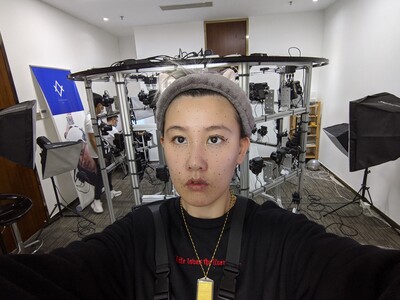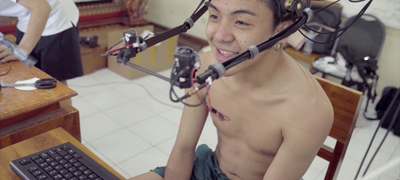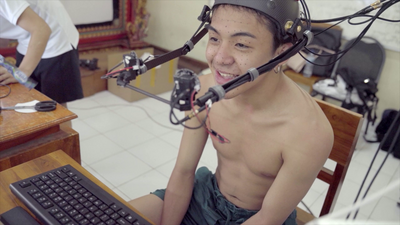Dream Within A Dream Traversing Boundaries Between Human And The Machine

Has God determined the aesthetics of human beings? With our eyes and brains, we can discern people’s tribe, gender, age and appearance clearly, and thus differentiate one another. However, it is difficult for us to tell who is who among monkeys in a zoo. In our brain, there is a specific area which is responsible for categorizing various types of human beings. This creates for us a world of diversity.
Buddhism defines eight types of suffering that most people will encounter in their lifetimes: The suffering of living. The suffering of aging. The suffering of sickness. The suffering of death. The suffering of separating with loved ones. The suffering of hatred and bitterness. The suffering of not getting what you want. And the suffering due to the five skandhas.
The longer we live, the more understand these sufferings. Our physical bodies appear trivial in comparison to the Nature. By creating a digital replica of ourselves, we seem to be able to get rid of most body-bound sufferings in a virtual way.
It’s like creating a robot that is identical to us. We can even imagine copying and uploading our awareness to it. The desire to exist in humans is so strong that we would likely accept such replica to replace our existence. The concept of “I think therefore I am“ is unable to stop modern-time humans from their eagerness to create a replica of themselves. It’s like a dream within a dream. We are so obsessed with the existence of “I”. It doesn’t seem to matter whether we are experiencing everything firsthand, or if it’s just our virtual replica existing and experiencing life on our behalf.
The spiritual longing for fictional characters is not unique to technologically advanced societies. Thousands years ago, people were already creating or worshiping invisible objects in the form of idol worship and myths. Such forms reflect humans’ desire for physical and spiritual perfection. Immortal bodies, never-aging bodies, the “perfect” body according to one’s own aesthetics, a gender-less body, bodies that are not bound by time and space, bodies that do not physically exist, and even a wise object that only mentally exists – these are all examples of such fantasies.
I create many different characters in my artwork. I allow those characters to embody my work and I often makes myself one of the characters. In these works, I attempt to simulate different stages of life with my own character. I also test the limits of deep brain stimulation by controlling my body.
On my BMW Art Journey, I have collected images of numerous dancers – from the Balinese dancers who have been training for decades since the age of 4-5, to the Kathakali dancers from Kerala, South India. These practitioners master exceptional techniques to control their facial and body muscles, which are otherwise impossible for ordinary people to achieve. With digital technology, I was able to simulate similar muscle control to create miraculous effects. In the world of virtual reality, physical limitations are removed, all things become possible. I was able to recover the data of humans training themselves to become robots. This data brings the digital human to life in the virtual reality. Boundaries between machines and humans melt away.
In this simulated world, the digital human I created is gender-neutral. It embodies exaggerated visual effects and it is capable of switching between various digital platforms, e.g. VR, game engine, 3D animation, real-time motion capture performance, digital character live-stream platform etc. Its developmental potential is limitless.
The digital sequences in these videos are made with equipment developed by FACEGOOD, the digital technology provider of Lu Yang’s BMW Art Journey. The complete expression of the digital human by Lu Yang requires the support of two crucial technologies. First, technology to collect and recover the delicate performance of the dancers. For instance, the facial micro-expressions of the Balinese and the Indian kathakali dancers are extraordinarily refined and complicated. Standard technology to capture facial expression will not be sufficient to render such extraordinary details. FACEGOOD has adopted the latest innovations for capturing facial expression. By deploying state-of-the-art duo camera technology, FACEGOOD can generate 3D reconstructions of the rapidly changing subtle micro-expression of the dancers. Second, the 3D facial expression data has to be recovered on the digital human created by Lu Yang. Traditional modeling is be capable of recovering such high-fidelity data. FACEGOOD has made use of a specially developed muscle system to process data from the dancers’ facial expressions. By adopting concepts of anatomy and biokinetics, the system produces high-fidelity simulations of every detail of the dancers’ performance.




